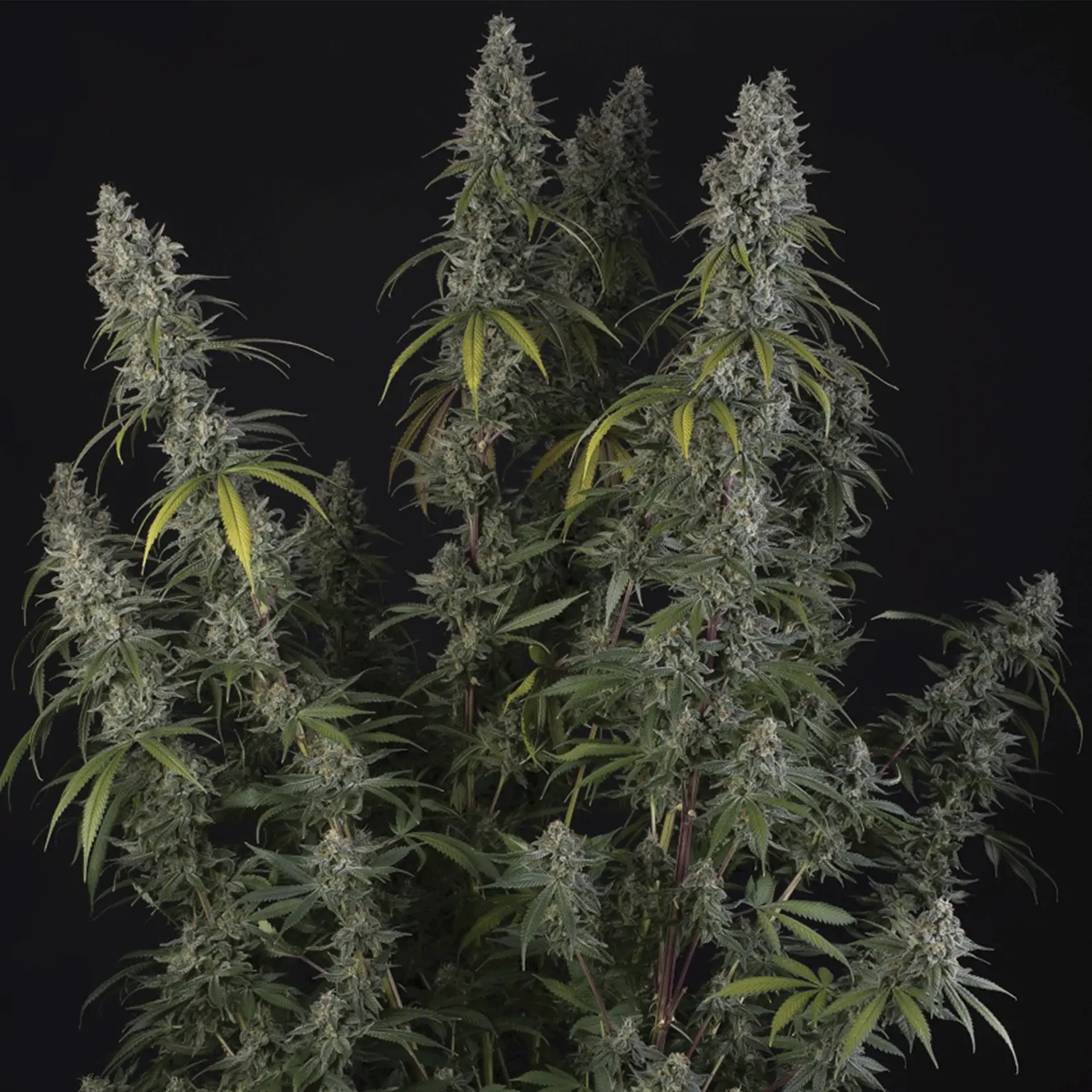Cannabis plant scent molecules: The terpenes & essential oils
Terpenes are also produced in trichomes. They are synthesized in the secretory cells of trichomes in the form of terpenoids. Through a series of chemical reactions, terpenes are converted into terpenoids, which are responsible for the aroma and taste of the cannabis plant. It is important to mention that terpenes are something that all plants produce in greater or lesser amounts terpenes and when they are extracted from other plants such as roses and oranges they are called essential oils.
How are terpenes produced?
Terpenes are produced through a complex biosynthetic process that starts with the production of isopentenyl pyrophosphate (IPP) and dimethylallyl pyrophosphate (DMAPP). These molecules are then combined into squalene, which is then converted into the precursor molecule of terpenes, called geranyl pyrophosphate (GPP). From GPP, different terpenes can be formed through a series of chemical reactions, depending on the enzymes present in the plant. These reactions can lead to the formation of different terpene classes such as monoterpenes, sesquiterpenes, and diterpenes.
Different types of Terpenes
There are many different types of terpenes in the cannabis plant, each with their own unique aroma and potential therapeutic properties. Some of the most common terpenes found in cannabis include:
- Myrcene: found in many varieties and has a musky, earthy aroma. It has sedative properties and can increase the absorption of other compounds through the blood brain barrier. It is the most widespread of all terpenes and studies show that up to 65% of the terpene profile of a cannabis plant consists of Myrcene.
- Limonene: found in varieties that have a citrusy aroma. It has an uplifting effect and may have anti-anxiety properties. This is the second most abundant terpene in cannabis, so if you’ve smoked more than one skunk joint then you’ve surely encountered the fresh and uplifting Limonene terpene. Limonene is what gives oranges and lemons the fresh citrus scent.
- Pine: found in varieties that have a pine-like aroma. It has an anti-inflammatory effect and can improve memory.
- Linalool: found in varieties that have a floral aroma. It has a calming and anxiolytic effect and may have anti-inflammatory properties.
- Caryophyllene: found in varieties that have a spicy aroma. It has anti-inflammatory and pain-relieving properties.
- Humulene: found in varieties that have a woody, earthy aroma. It has anti-inflammatory and appetite suppressant properties.
- Terpinol: found in varieties that have a woody, floral aroma. It has calming properties and may have antioxidant properties.
- Ocimen: found in varieties that have a fresh, herbaceous aroma. It has antiseptic, antiviral, and anti-inflammatory properties.
- Bisabolol: found in varieties that have a floral aroma. It has anti-inflammatory and anti-irritant properties.
- Geraniol: found in varieties that have a floral aroma. It has anti-inflammatory and antioxidant properties.
- Valencene: found in varieties that have a citrusy aroma. It has anti-inflammatory properties.
It is important to note that this is not an exhaustive list and that many other types of terpenes exist. Furthermore, the specific terpene profile of a cannabis variety can vary depending on many factors, including the environment, fertilizer, and the plant’s maturity and general state of health, which will affect the amount and composition of terpenes in a cannabis flower. This fact that the composition of terpenes can be affected by environmental factors differs from the cannabinoids, whose ratio between the various cannabinoids is genetically determined and is not influenced by the environment. The amount of cannabinoids and terpenes is always higher in healthy and healthy plants that grow under optimal conditions than plants that have not had the same good conditions.
Chemical composition of Terpenes
- Myrcene: C10H16
- Limonene: C10H16
- The pins: C10H16
- Linalool: C10H18O
- Caryophyllene: C15H24
- Humulene: C15H24
- The terpinolene: C10H16
- Ocimen: C10H16
- Bisabolol: C15H26O
- Geraniol: C10H18O
- Valence


It is a pleasure to read this weblog, thanks to its up-to-date information and interesting posts. Look into my web page QN6 for some really good points and find out more about Cosmetics.